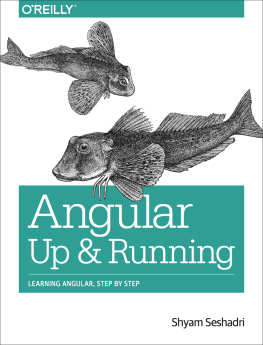Manfred Steyer - Enterprise Angular
Here you can read online Manfred Steyer - Enterprise Angular full text of the book (entire story) in english for free. Download pdf and epub, get meaning, cover and reviews about this ebook. year: 2019, publisher: leanpub.com, genre: Computer. Description of the work, (preface) as well as reviews are available. Best literature library LitArk.com created for fans of good reading and offers a wide selection of genres:
Romance novel
Science fiction
Adventure
Detective
Science
History
Home and family
Prose
Art
Politics
Computer
Non-fiction
Religion
Business
Children
Humor
Choose a favorite category and find really read worthwhile books. Enjoy immersion in the world of imagination, feel the emotions of the characters or learn something new for yourself, make an fascinating discovery.

- Book:Enterprise Angular
- Author:
- Publisher:leanpub.com
- Genre:
- Year:2019
- Rating:3 / 5
- Favourites:Add to favourites
- Your mark:
- 60
- 1
- 2
- 3
- 4
- 5
Enterprise Angular: summary, description and annotation
We offer to read an annotation, description, summary or preface (depends on what the author of the book "Enterprise Angular" wrote himself). If you haven't found the necessary information about the book — write in the comments, we will try to find it.
Enterprise Angular — read online for free the complete book (whole text) full work
Below is the text of the book, divided by pages. System saving the place of the last page read, allows you to conveniently read the book "Enterprise Angular" online for free, without having to search again every time where you left off. Put a bookmark, and you can go to the page where you finished reading at any time.
Font size:
Interval:
Bookmark:

This book is for sale at http://leanpub.com/enterprise-angular
This version was published on 2020-12-05

* * * * *
This is a Leanpub book. Leanpub empowers authors and publishers with the Lean Publishing process. Lean Publishing is the act of publishing an in-progress ebook using lightweight tools and many iterations to get reader feedback, pivot until you have the right book and build traction once you do.
* * * * *
Over the last years, Ive helped numerous companies with implementing large-scale enterprise applications with Angular.
One vital aspect here is decomposing the system into smaller libraries to reduce complexity. However, if this results in countless small libraries which are too intermingled, you havent exactly made progress. If everything depends on everything else, you cant easily change or expand your system without breaking connections.
Domain-driven design, and especially strategic design, helps. DDD can be the foundation for building microfrontends.
This book, which builds on several of my blogposts about Angular, DDD, and microfrontends, explains how to use these ideas.
If you have any questions or feedback, please reach out at manfred.steyer@angulararchitects.io. Im also on Twitter (https://twitter.com/ManfredSteyer) and Facebook (https://www.facebook.com/manfred.steyer). Stay in touch for updates about my Enterprise Angular work.
Please let me know if you have any suggestions. Send a pull request to the books GitHub repository.
If you and your team need support or trainings regarding Angular, we are happy to help with our on-site workshops and consultancy. In addition to several other kinds of workshop, we provide the following ones:
- Advanced Angular: Enterprise Solutions and Architecture
- Angular Essentials: Building Blocks and Concepts
- Angular Architecture Workshop
- Angular Testing Workshop (Cypress, Just, etc.)
- Angular: Reactive Architectures (RxJS and NGRX)
- Angular Review Workshop
- Angular Upgrade Workshop
Please find the full list of our offers here.
 Advanced Angular Workshop
Advanced Angular WorkshopWe provide our offer in various forms: Online, public dates, or as dedicated company workshops in English or German.
If you have any questions, reach out to us using office@softwarearchitekt.at.
I want to thank several people who have helped me write this book:
- The great people at Nrwl.io who provide the open-source tool Nx used in the case studies here and described in the following chapters.
- Thomas Burleson who did an excellent job describing the concept of facades. Thomas contributed to the chapter about tactical design which explores facades.
- The master minds Zack Jackson and Jack Herrington helped me to understand the API for Dynamic Module Federation.
- The awesome Tobias Koppers gave me valuable insights into this topic and
- The one and only Dmitriy Shekhovtsov helped me using the Angular CLI/webpack 5 integration for this.
Monorepos allow large enterprise applications to subdivide into small maintainable libraries. First, however, we need to define criteria to slice our application into individual parts. We must also establish rules for communication between them.
In this chapter, I present the techniques I use to subdivide large software systems: strategic design. Its part of the domain driven design (DDD) approach. I also explain how to implement its ideas with an Nx-based monorepo.
DDD describes an approach that bridges the gap between requirements for complex software systems and appropriate application design. Within DDD, we can look at the tactical design and the strategic design. The tactical design proposes concrete concepts and patterns for object-oriented design or architecture and has clear views on using OOP. As an alternative, there are approaches like Functional Domain Modeling that transfer the ideas behind it into the functional programming world.
By contrast, strategic design deals with the breakdown of an extensive system into individual (sub-)domains and their design. No matter if you like DDDs views or not, some ideas from strategic design have proven useful for subdividing a system into smaller, self-contained parts. It is these ideas that this chapter explores in the context of Angular. The remaining aspects of DDD, however, are irrelevant for this chapter.
One goal of strategic design is to identify self-contained domains. Their vocabulary identifies these domains. Domain experts and developers must use this vocabulary to prevent misunderstandings. As the code uses this language, the application mirrors its domain and hence is more self-describing. DDD refers to this as the ubiquitous language.
Another characteristic of domains is that often only one or a few groups of experts primarily interact with them.
To recognise domains, it is worth taking a look at the processes in the system. For example, an e-Procurement system that handles the procurement of office supplies could support the following two processes:
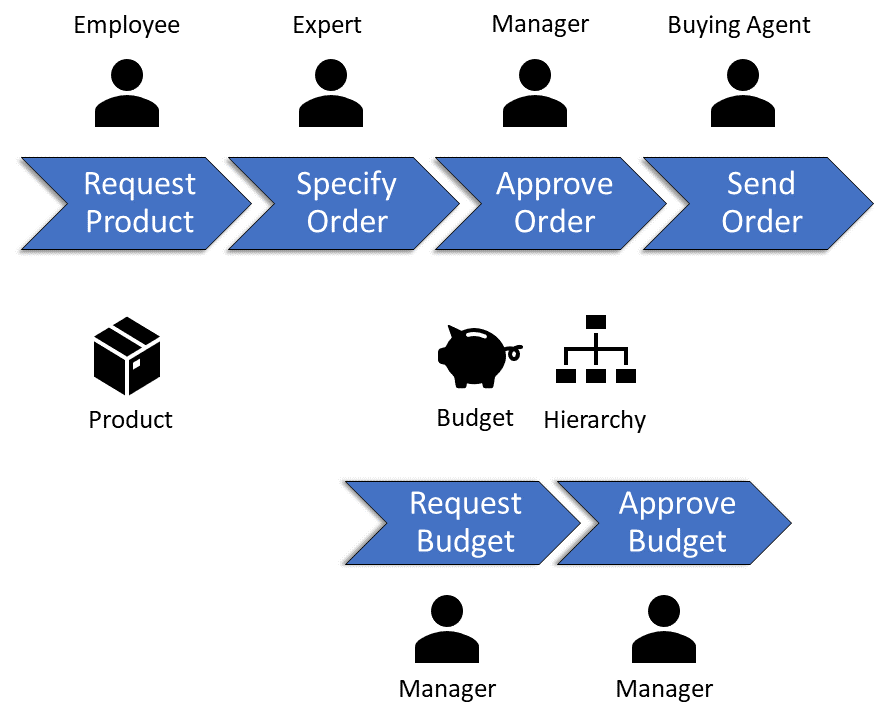
We can see that the process steps Approve Order, Request Budget and Approve Budget primarily revolve around organisational hierarchies and the available budget. Managers are principally involved here. By contrast, the process step is fundamentally about employees and products.
Of course, we could argue that products are omnipresent in an e-Procurement system. However, a closer look reveals that the word product denotes different items in some of the process steps shown. For example, while a product description is very detailed in the catalogue, the approval process only needs a few key data:
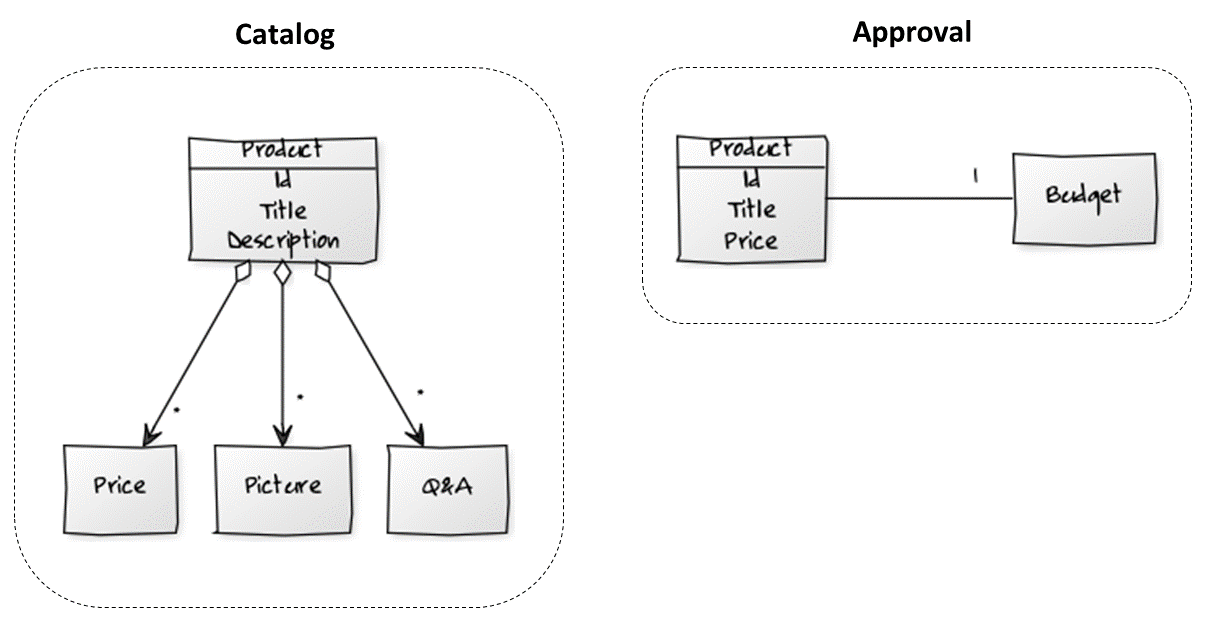
We must distinguish between these two forms of a product in the ubiquitous language that prevails within each domain. We create different models that are as concrete and meaningful as possible.
This approach prevents the creation of a single confusing model that attempts to describe everything. These models also have too many interdependencies that make decoupling and subdividing impossible.
We can still relate personal views of the product at a logical level. If the same id on both sides expresses this, it works without technical dependencies.
Thus, each model is valid only within a specific scope. DDD calls this the bounded context. Ideally, each domain has its own bound context. As the next section shows, however, this goal cannot always be achieved when integrating third-party systems.
Font size:
Interval:
Bookmark:
Similar books «Enterprise Angular»
Look at similar books to Enterprise Angular. We have selected literature similar in name and meaning in the hope of providing readers with more options to find new, interesting, not yet read works.
Discussion, reviews of the book Enterprise Angular and just readers' own opinions. Leave your comments, write what you think about the work, its meaning or the main characters. Specify what exactly you liked and what you didn't like, and why you think so.

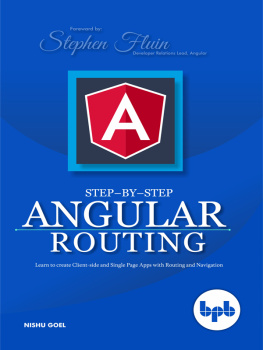
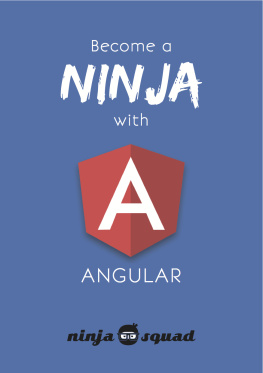



![Prashant Padmanabhan [Prashant Padmanabhan] - Java Ee 8 and Angular](/uploads/posts/book/119345/thumbs/prashant-padmanabhan-prashant-padmanabhan-java.jpg)
